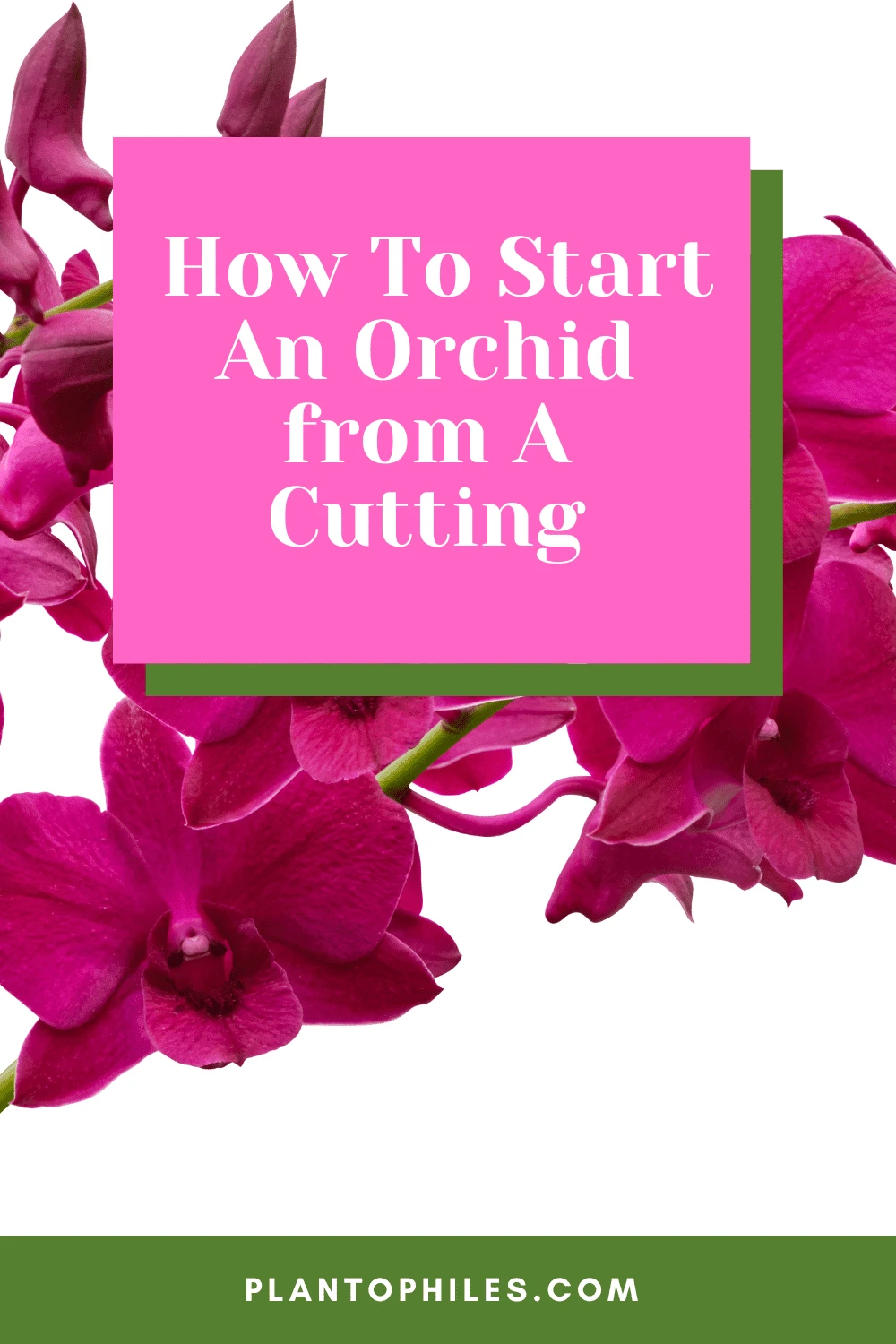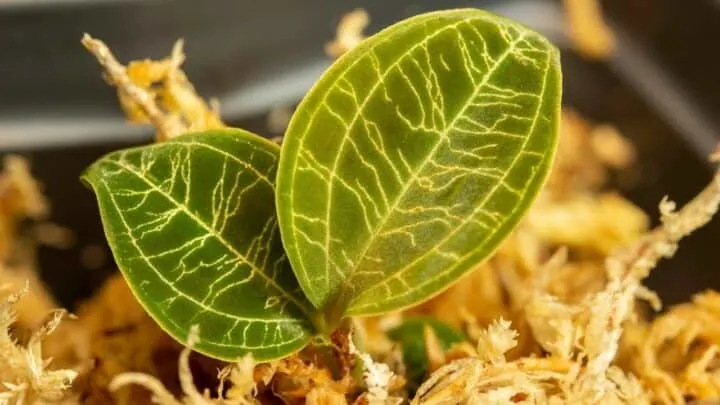Those new to growing orchids might find it surprising that you cannot grow most orchids from a cutting.
But if you cultivate dendrobium orchids, you can use the time-honored method of making cuttings and growing a new plant.
Table of Contents
How To Start An Orchid from A Cutting
To start an orchid from a cutting, prepare a rooting tray and area with temperatures between 75 to 85 degrees Fahrenheit (23.9 – 29.4 degrees Celsius). Cut the short spike. Once the flowers die, cut the foot-long stems from the parent plants. Cut them then into 3-node sections. Place the stems onto the rooting tray and spray every two weeks for two months. Once roots appear, cut the stems before potting.

How To Start An Orchid from A Cutting
How To Grow An Orchid From A Cutting
You have a little work to do while the orchid blooms to ready the dendrobium orchid for making cuttings. The plant flowers on short spikes are produced by their stem nodes.
When the flowers fall, you cut the spikes. Before snipping your plant, dip the pruning shears into rubbing alcohol.
Open and close the shears while immersed so you sterilize all portions of the blades. This helps you avoid spreading diseases between plants.
Without this step, which takes place throughout the growing season, your orchids wouldn’t be ready for cuttings.
Read more about how to grow an orchid from a cutting.
1. Prepare your rooting tray
You need a special spot to place your cuttings while they develop. Prepare a rooting tray by adding a layer of pebbles.
Next, add a layer of either bark or sphagnum moss. In the case of the moss, soak it first, then drain the water. Evenly spread the moss on a rooting tray.
2. Make your cuttings
Once all the flowers have dropped from your exquisite orchid, cut the foot-long or longer stems from the parent plant. Cut each of the stems into three sections.
Before cutting the plant, dip the pruning shears into rubbing alcohol. Open and close the shears while immersed so you sterilize all portions of the blades.
You should do this before any cut you make so you avoid spreading diseases between plants.
3. Put the cuttings on a rooting tray
Place the cuttings evenly spaced on top of the moss. Spray the cutting with water.
4. Tent your cuttings
Make a little plastic wrap tent for your rooting tray, covering the cuttings.
This helps the cuttings retain moisture and remain humid in their warm spot.
5. Maintain the room temperature.
Keep your room temperature within the 75-85 degree Fahrenheit mark.
6. Spray, not water the cuttings
During the first two months, keep the orchid cuttings moist yet not wet. Spray the cuttings with water just enough to keep them moist.
Every two weeks, also spray the orchid cuttings with water-soluble nitrogen fertilizer. You can stop using the fertilizer when you see roots and leaves sprouting.
7. Remove any material that appears to be rotting
With all of that water and fertilizer, you could get some rot. The moment you notice rot, pinch it off.
8. Cut the stem when it develops roots and shoots
Cut the stems between the sprouts when you spot the roots and shoots growing. (Remember to sterilize your shears before you cut.)
9. Prepare your flowerpots
Place sphagnum moss, bark, or weathered volcanic rock as a planting medium in a two-inch flowerpot.
Soak the material until moist.
10. Pot your roots and shoots
Place each in a two-inch flowerpot with erected stem and the shoots facing upwards or sideways. If needed, you can add a support post or stick to keep the cutting erect.
Don’t use a larger pot because dendrobium orchids thrive best in small flowerpots.
Frequently Asked Questions About How To Start An Orchid from A Cutting
Should you prune an orchid?
You can and should prune orchids to encourage healthy growth. Prune out the older, non-blooming stems to reduce overcrowding. This helps the plant grow healthy blossoms.
How diverse is the dendrobium orchid?
You can choose between 1,200 genre of dendrobium orchids divided between two types, deciduous and evergreen plants.
Can all dendrobium orchids thrive in a greenhouse?
You can grow both deciduous and evergreen orchids in a greenhouse. Some arborists say that the deciduous type is easier for beginning orchid growers because those varieties prove tougher than evergreens.
What light requirements do dendrobium orchid flowers have?
The dendrobium orchids require partial shade. Their minimal light requirements mean they can get away with less sunlight. This also makes it easier to grow these orchids inside.
What watering requirements do these flowers have?
While they need less light, you need to water the orchids frequently. Rather than soaking, they prefer misting. This comes closest to the feeling and dispersal of rain on their leaves and stems.
Why should you place your plants inside a greenhouse?
Growing your plants inside a greenhouse protects them from harmful pests, such as mealybugs, two-spotted spider mites, scales, thrips, and aphids. It also helps keep them disease-free. A greenhouse also lets you maximize your yard space since you can use shelves inside it to provide more space for plants. You can plant early inside a greenhouse and protect your beautiful orchids from inclement weather.
Conclusion
You can take cuttings of your orchid to propagate more orchids by putting them in a warm and humid rooting tray.

Daniel has been a plant enthusiast for over 20 years. He owns hundreds of houseplants and prepares for the chili growing seasons yearly with great anticipation. His favorite plants are plant species in the Araceae family, such as Monstera, Philodendron, and Anthurium. He also loves gardening and is growing hot peppers, tomatoes, and many more vegetables.


